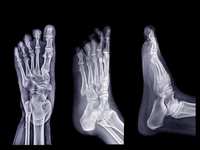Understanding Diabetic Foot: Causes, Symptoms, and Effective Treatments

Diabetes is a condition that affects about 30 million people in the United States alone. This is a disease that is related to the body’s inability to properly regulate blood sugar levels. As a result, there are many secondary problems that can result from having diabetes.
One of the most common issues is with the feet. Read on to learn more about the causes, symptoms and effective treatments for the condition known as diabetic foot.
What is Diabetic Foot?
Diabetic foot is a specific condition where the underlying disease diabetes causes damage to one or both feet. Diabetes leads to neuropathy, which is when the blood vessels don’t supply enough blood to various parts of the body.
The extremities, such as the feet, are often one of the most common areas to exhibit symptoms. Left untreated, diabetic neuropathy in the foot leads to Charcot arthropathy, also referred to as Charcot neuroarthropathy or simply, Charcot foot.
Note that, if you have diabetes and you see a foot doctor on a regular basis for monitoring and treatment, Charcot foot might be avoided. Charcot foot is the serious result of undetected and untreated diabetic neuropathy in the foot.
Causes of Diabetic Foot
As mentioned diabetes is a disease where the body is incapably of properly regulating blood sugar. This ends up causing damage to small blood vessels in the feet and other areas. In the feet specifically, this lack of sufficient blood supply causes nerve damage. In turn, the reduction in nerve sensation leads to an inability for a person to recognize when their feet are injured. For a person with diabetes, they may have a cut or wound on their foot and never even notice it.
The other aspect of this problem comes with the reduced ability of the body to heal wounds, again due to the poor blood supply. So not only might there be an unnoticed wound, but it can worsen and get infected, and be unable to heal like a normal wound. In the meantime, the individual may be completely oblivious to what’s happening.
Symptoms of Diabetic Foot
Early symptoms of diabetic foot include:
- pins and needles when standing after sitting
- numbness in a particular spot or a general, “all over” numbness
- wound that isn’t healing (open or otherwise)
- feet always seem to feel cold
- increase in stumbling/missteps
If you have any suspicion that you may be developing diabetic foot, it’s important to visit with your foot doctor right away. Advise the doctor if you have diabetes, so proper monitoring and treatment can take place.
Treatment for Diabetic Foot
The best treatment for diabetic foot is prevention. If you have diabetes, let your foot doctor know. With each visit, the doctor can carefully inspect your feet, run tests and ask questions to determine the extent of any nerve damage.
At home, make a habit of visually and physically examining your feet for wounds. Run your hands gently along your feet and soles to inspect for any abnormalities. Report any findings to your foot doctor.
Wear proper shoes. Your foot doctor may be able to prescribe orthotics to ensure that your feet are comfortable when you walk, and that there is no irritation or aggravation of the skin against the shoe materials.
If you have an open wound or ulcer on your diabetic foot, you may need a prescription antibiotic to help it heal. The wound must heal in order to protect the rest of the foot from spreading infection.
If you have already developed Charcot foot, you may have prominent bone growth that make wearing shoes hard or impossible. For this, surgery may be needed to remove the prominence and to enable the proper movement needed for walking and other movement.
Diabetic foot is nothing to ignore. Left untreated, it will worsen. It will never get better without the help of a podiatrist. Don’t waste another minute. Contact Sweeney Foot & Ankle today to book an appointment for a consultation.


















